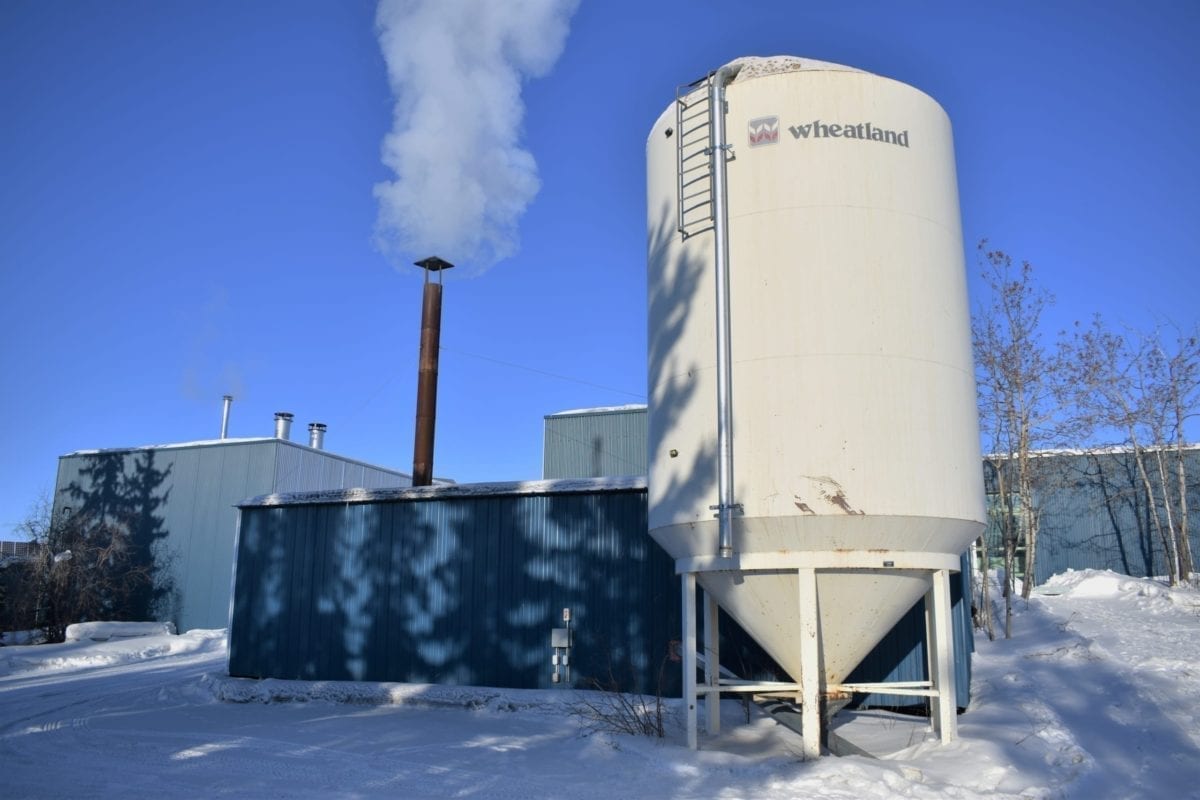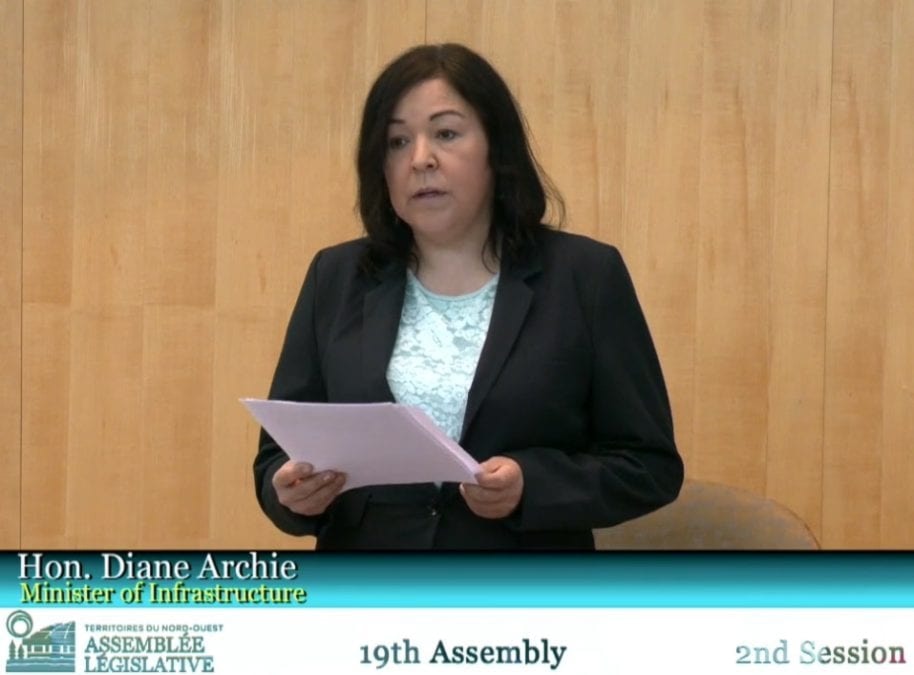Pellet boiler projects and electric vehicle rebates are some of the energy efficiency programs that are moving forward in the NWT, showing that the territory is working on meeting the strategic objectives of its 2030 Energy Strategy Action Plan, Infrastructure Minister Diane Archie said in the legislative sssembly on Oct. 19.
Her speech came as an update on the action plan, one of the government's 22 mandate priorities.
Joint funding by the federal and territorial governments has enabled movement on community energy efficiency projects, Archie said.

Blair McBride/NNSL photo
She cited financial resources to install pellet boilers at two Yellowknife Education District No. 1 schools and funding for energy efficiency projects in three town buildings in Fort Smith.
In April, Yk1 announced that the federal government’s GHG Grant Program would cover $900,000 of the $1.2 million to $1.4 million total cost of two pellet boilers at Mildred Hall and Range Lake North schools. Yk 1 would contribute $350,000 to $400,000.
The Arctic Energy Alliance (AEA), which receives funding from the GNWT is continuing its Regional Office Program, Archie said, with six regional offices where the organization engages with communities and promotes its energy programs.
"Last year, this program invested $800,000 into the work of these offices, resulting in over $1-million worth of energy rebates paid directly to communities, business and residents outside of Yellowknife for things like energy-efficient appliances, efficiency upgrades to buildings and alterative heating like wood stoves," she said.
Of AEA's total budget of about $5.9 million, last year it gave out $1.9 million in rebates across the NWT, with more than 50 per cent going to communities outside Yellowknife.
New federal funding from the Low Carbon Economy Leadership Fund helped the AEA expand its programs and almost doubled the number of rebates it provided in 2019-2020 compared to the previous year, for an increase of 150 per cent, worth almost $1 million, Archie said.
Rebates went to Northerners who bought such energy-efficient products as wood stoves, LED lightbulbs and Energy Star-certified appliances; and to communities that install renewable energy systems.
AEA's electric vehicle rebate program, launched in June, is also ongoing and provides rebates of $5,000 for new electric vehicles and up to $500 for charging stations.
Since June, the AEA has given out three vehicle rebates worth $15,000, said spokesperson Kevin Cull.
"We’ve also pre-approved another four vehicle rebates and three charger rebates, meaning we’ve set funds aside for those people and they will get their rebates once they complete their purchases and submit their final paperwork," he said, adding that the pre-approvals are for home-based chargers.
Archie said the government is pushing forward a project to build a 170-kilometre transmission line from the Taltson hydro system to serve Fort Providence, Kakisa, and Dory Point, with the aim of eliminating the use of diesel power generation in those communities.
"This project is essential for the NWT to meet its greenhouse gas reduction commitments, providing about 15 per cent of our total reduction target for electricity generation, and would remove up to one million litres of diesel and 2.75 kilotonnes of greenhouse gas emissions annually," she said.
In an effort to reduce transportation emissions, the GNWT is also exploring the use of biofuels and in 2019 began a study to see how biofuels can work in a cold, Northern climate and their feasibility in terms of cost and availability.
The study will assess if biofuels on the market could be used in the NWT for transportation, space heating or power generation, said Department of Infrastructure spokesperson Agata Gutkowska. Based on the study, ethanol and renewable diesel were the two biofuels chosen for further analysis.
That study is scheduled to be completed in early 2021.
The NWT's hydro systems at Snare Forks and Taltson are scheduled for upgrades as well, Archie said.
A total overhaul of the generating unit at Snare Forks was started. Its completion was delayed because of the Covid-19 pandemic but it's scheduled to be complete before the end of 2020.
The pandemic also delayed an overhaul of the Taltson facility, although its annual maintenance shutdown took place in the summer when equipment assessments were completed to determine design, manufacturing and procurement details for the major overhaul. Parts are due to arrive in 2021, with the overhaul scheduled for 2022.
The GNWT’s annual Energy Initiatives Report will provide a complete overview of last year’s energy initiatives, and will be released this fall.
